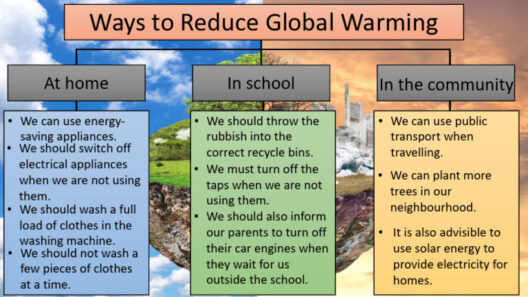As global temperatures continue to rise, the need for climate control has never been more pressing. Air conditioning (AC) systems have become ubiquitous in modern society, promising respite from scorching heat. However, the question arises: do they represent a viable solution for combating global warming, or do they inadvertently contribute to the problem?
The primary role of an air conditioning unit is to remove heat and humidity from indoor air, creating a more comfortable environment. While this function is beneficial during extreme heat events—which are becoming more frequent due to climate change—this comfort comes at a substantial ecological cost. The refrigerants used in AC systems, primarily hydrofluorocarbons (HFCs), are potent greenhouse gases known to have a global warming potential thousands of times greater than carbon dioxide. The release of these substances into the atmosphere exacerbates the very crisis they aim to alleviate.
Energy Consumption and Emissions
One of the most significant impacts of air conditioning is its high energy consumption. The electricity required to power AC units contributes to greenhouse gas emissions, especially in regions where energy is derived from fossil fuels. According to the International Energy Agency, air conditioning accounts for approximately 10% of global electricity consumption. This figure is projected to rise sharply as more households in developing countries gain access to this technology.
The increase in demand for electricity can lead to higher emissions from power plants. In regions heavily reliant on coal or natural gas, the expansion of AC usage can unleash a vicious cycle—more cooling leads to more emissions, which in turn accelerates climate change and creates the very conditions that necessitate more cooling. In contrast, jurisdictions that invest in renewable energy sources may mitigate some of this impact, allowing AC units to operate with a lower carbon footprint.
Innovative Technologies and Solutions
In light of the looming threat of climate change, innovative technologies are being developed to address the paradoxical relationship between comfort and sustainability. One such innovation is the implementation of energy-efficient cooling systems. These systems utilize advanced technologies, such as variable-speed compressors and improved insulation, to minimize energy use. Additionally, smart thermostats can optimize the performance of AC units by learning user behavior and adjusting settings accordingly.
Evaporative cooling systems offer another alternative. These systems use water to cool air, significantly reducing electricity usage compared to traditional AC units. However, their efficiency is contingent on local humidity levels, making them better suited for dry climates. As such, evaporative coolers can potentially lessen the demand for electricity while providing effective cooling in appropriate regions.
Passive Cooling Strategies
While technology plays a pivotal role, it is essential to recognize the potential of passive cooling strategies. Such approaches rely on the design of buildings and natural processes to keep indoor environments comfortable without mechanical intervention. Utilizing green roofs, strategically placed windows, and shading elements can reduce the heat absorbed by structures, thereby minimizing the need for air conditioning.
Implementing reflective materials and light-colored surfaces can also significantly lower the heat absorption of buildings. In urban areas, where concrete and asphalt dominate the landscape, the phenomenon known as the urban heat island effect exacerbates the demand for cooling. By introducing green spaces and enhancing vegetation cover, cities can mitigate this effect, allowing natural cooling to occur and reducing reliance on air conditioning.
Behavioral Adjustments
Behavioral adjustments also play a critical role in managing energy consumption and heat exposure. Public awareness campaigns and education can promote practices such as setting thermostats at higher temperatures, utilizing fans, and wearing lighter clothing indoors. Adaptive behaviors that mitigate the need for artificial cooling can significantly lessen the environmental impact associated with AC units.
Policy Implications
The implementation of effective policies can drive the transition toward more sustainable cooling solutions. Governments must prioritize the development and enforcement of regulations that phase out high-GWP refrigerants and encourage the adoption of natural refrigerants such as ammonia or propane. Economic incentives for investing in energy-efficient appliances and renewable energy infrastructure could catalyze the widespread adoption of sustainable cooling technologies.
Furthermore, urban planning that incorporates green design and natural cooling strategies should be a priority in climate-resilient development efforts. As cities expand, integrating these principles can decrease both the heat island effect and the need for energy-intensive cooling solutions.
An Intersection of Necessity and Responsibility
In conclusion, while air conditioning systems serve a crucial role in providing comfort during extreme heat, their potential to contribute to global warming cannot be overlooked. As the climate crisis intensifies, society faces an intersection of necessity and responsibility. Balancing the need for cooling with sustainability will require a multifaceted approach that encompasses technological advances, behavioral changes, and policy interventions.
There is no one-size-fits-all answer to the question of whether AC can save us from global warming or make it worse. The future of cooling lies in a harmonious blend of innovative technologies, passive strategies, and conscious consumer behavior. As such, it is imperative to navigate these challenges thoughtfully and strategically, ensuring that the quest for comfort does not compromise our planet’s health.








